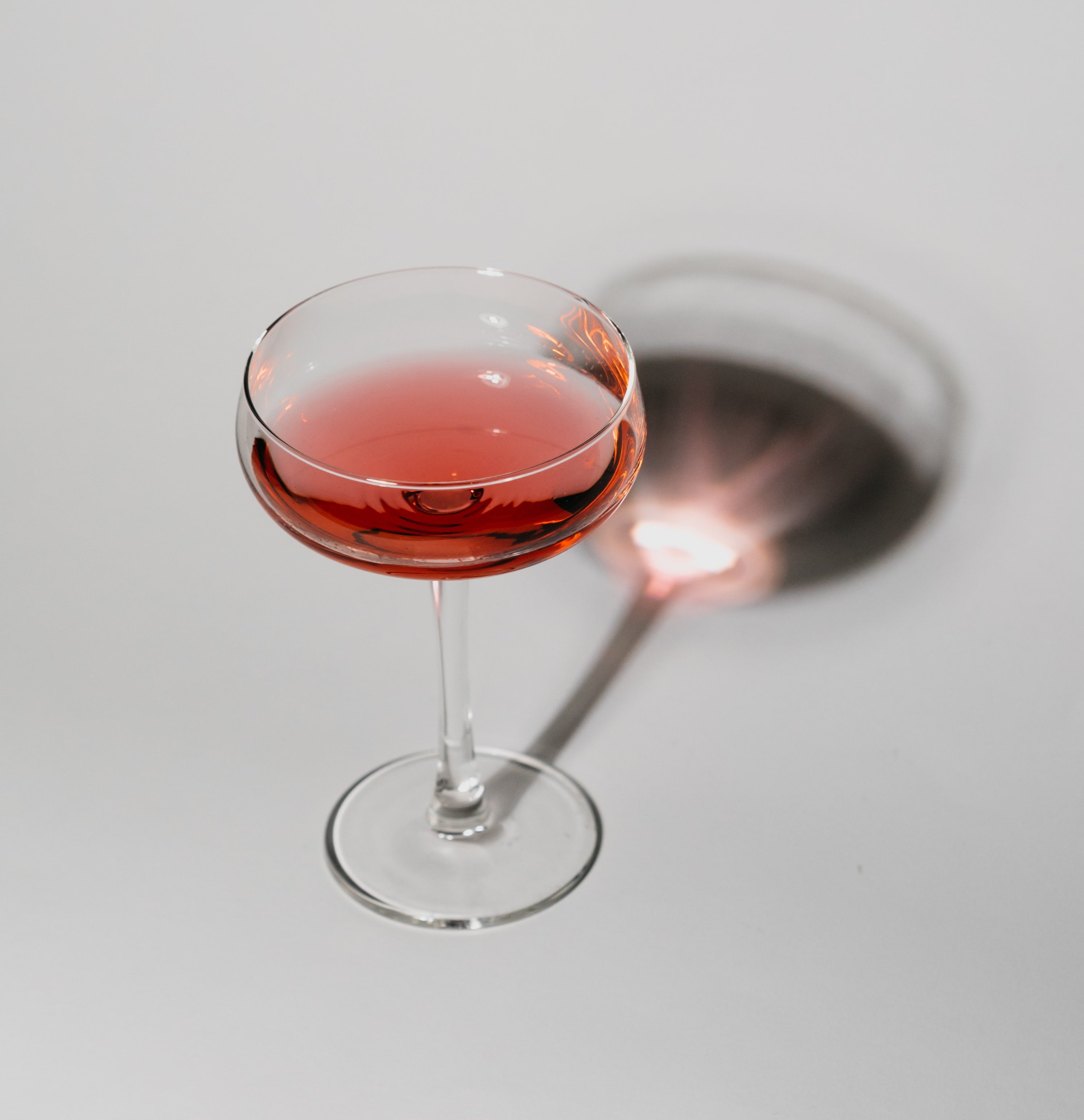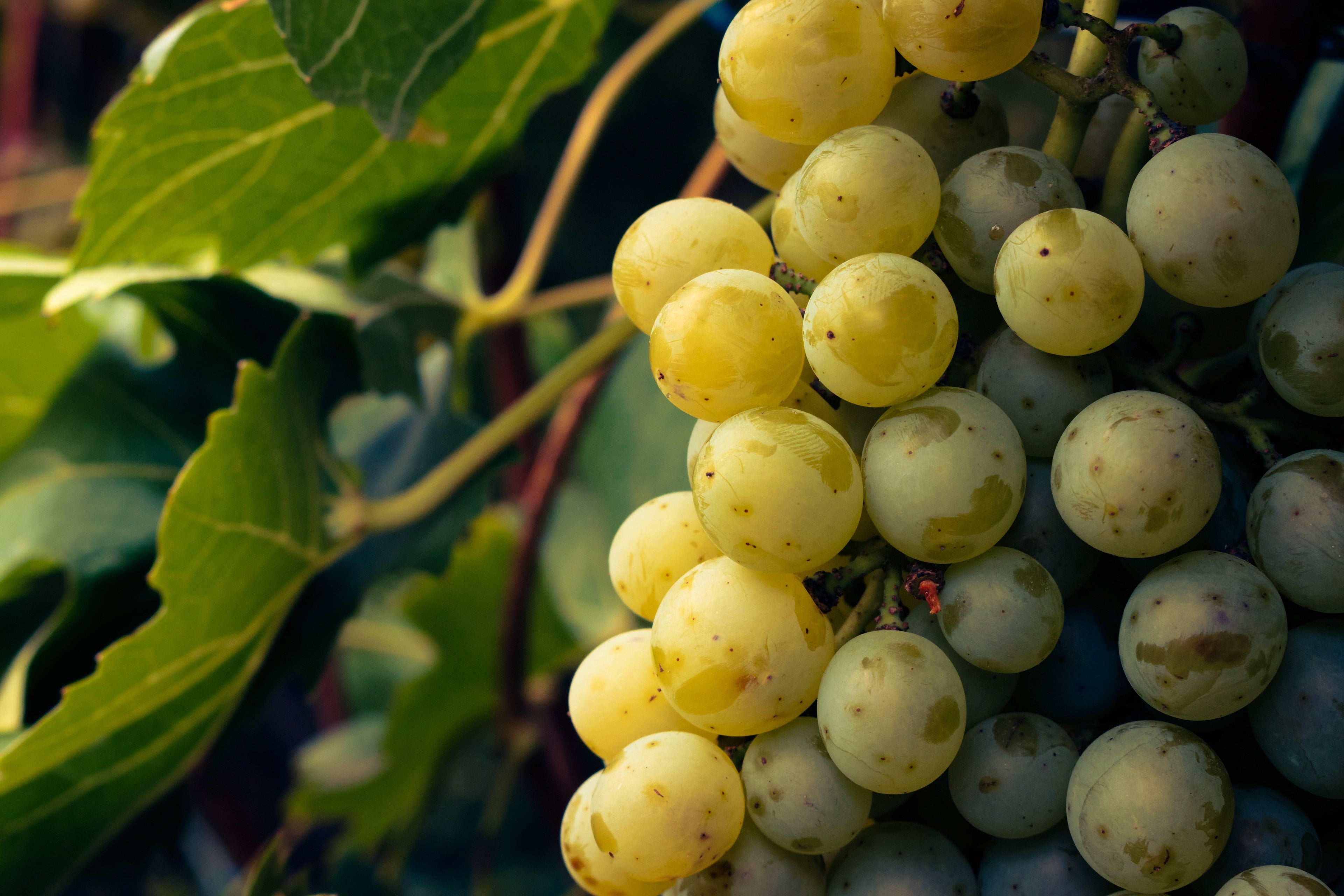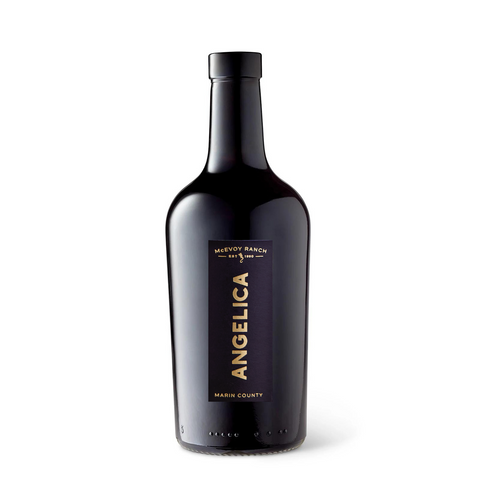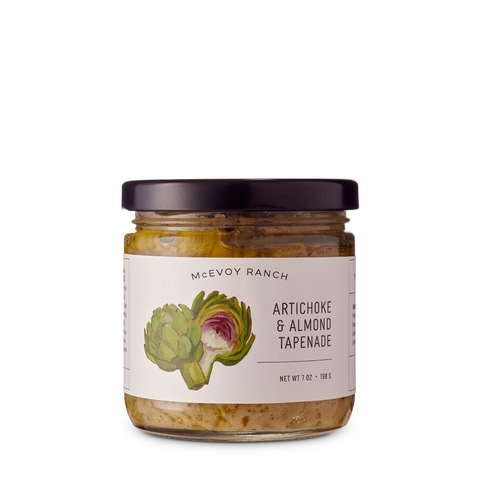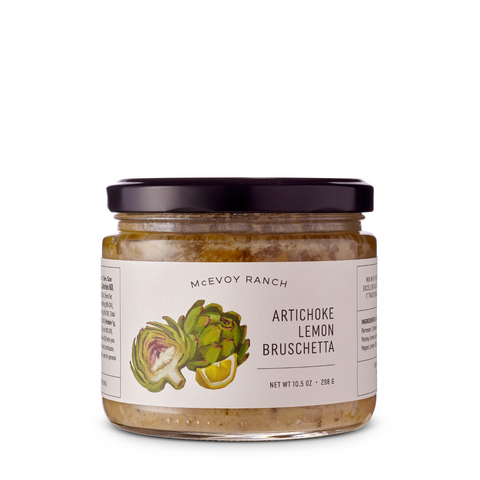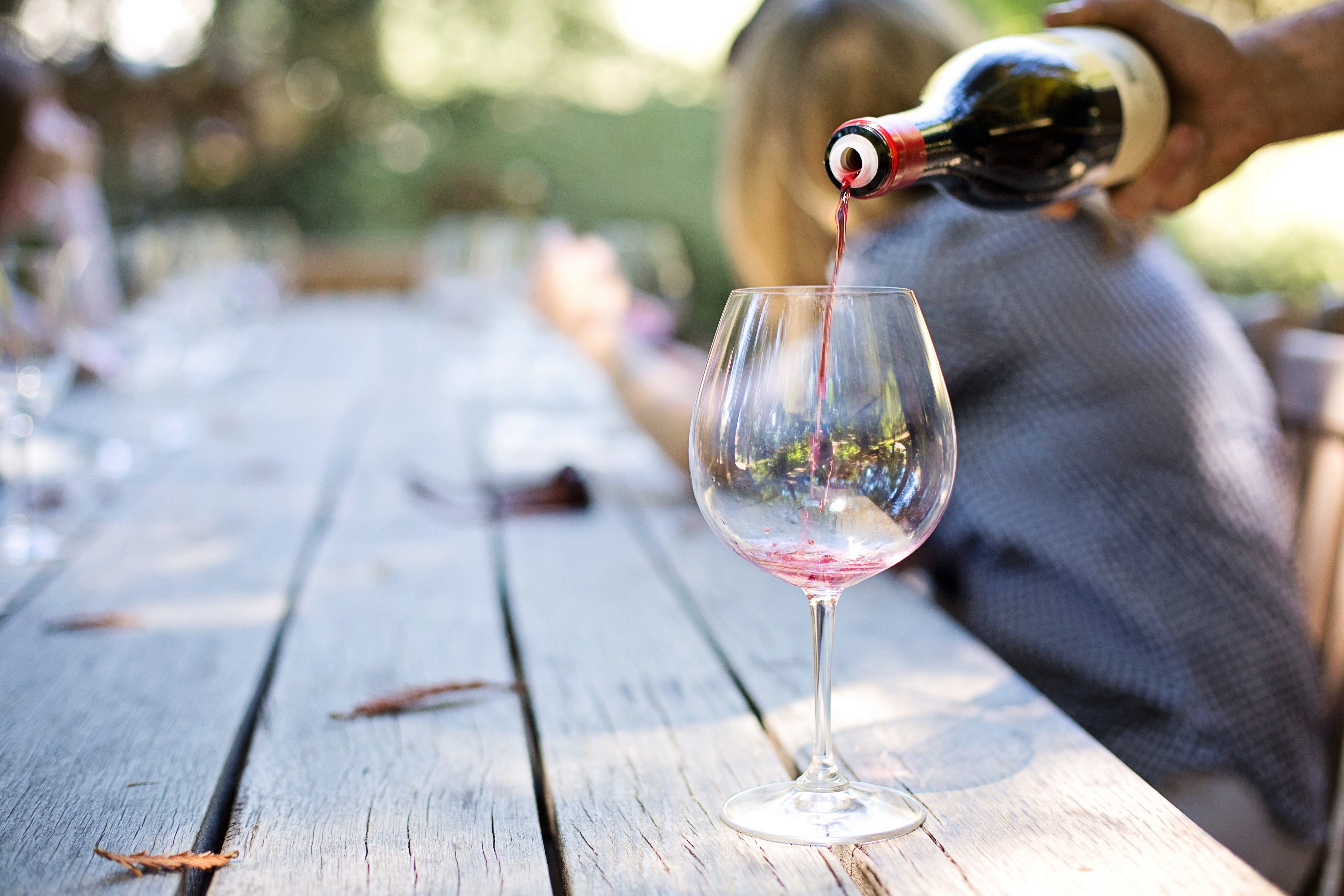
A simple method to get started is what’s known as the Five S approach. There are five aspects to evaluating a wine that all begin with the letter S: Sight, Swirl, Sniff, Sip, and Savor. A complete evaluation of wine involves all the senses; indeed, many people argue that even our hearing is important, because wine is a social beverage that induces conversation. But for now, we’ll stick with the four senses of sight, smell, taste and, to the extent that the texture and mouthfeel of wine is important, touch.
Let’s get started by pouring a little wine into a good wine glass. Stemware is important; a well-made wine glass will help you to see and smell the wine. Pour just a few ounces; this is tasting, not drinking. Let’s assume we’re tasting a Pinot Noir, such as McEvoy Ranch Evening Standard Pinot Noir.
SIGHT
The first aspect of wine tasting is Sight. Take a look, a careful look at the wine in the glass. What is its color? Red, yes, but what shade of red? More brick in color or veering towards purple? How about the density of color? Is it nearly opaque or, as is most likely with a Pinot Noir, is there a translucence to it? A good visual examination can tell you a lot about a wine. The lighter in color, for example, likely means the lighter the body of the wine.
SWIRL
Now it’s time to Swirl the wine. Is this just a pretentious, wine-snobby kind of thing? Well...maybe, if done for the wrong reasons. The right reason to swirl a wine is to aerate it. That is, to get air into the wine helping to release more aromas and flavors. This is another good reason for using a stemmed wine glass with a good (not too big) bowl to it. Try spinning a tumbler of wine around and you’ll be mopping the floor, but a wine glass lets you get some air into the wine without spilling a drop. Once you’ve swirled the wine for 10 seconds or so, it’s time to Sniff the wine.
SNIFF
Now we’re really getting serious; our sense of smell is far more sensitive than our sense of taste. While we can identify five tastes, sweet, sour, salty, bitter, and umami (the taste of most proteins such as meat), our sense of smell is virtually unlimited and aromas can affect the flavors we perceive. So when you sniff that wine, really get your nose in the glass and take a deep whiff. Let those aromas sink in, give it some thought and go in for another deep sniff. You’re looking for a balance of smells of fruit (which kind of fruit?), savoriness, earthiness, wood, (the barrels the wine ages in, if it was aged like this Pinot Noir give off many complex smells and tastes), spiciness, acidity, and other aromas. See how many you can identify, and be as specific as possible. What kind of fruit? What kind of spice? OK, now it’s time for the fun part, finally. Let’s taste, or Sip the wine.
SIP
Sip a little, and if you like, swirl the wine around in your mouth and suck a little air in over it before swallowing. These will help aerate the wine a little more and release more aromas and flavors. If that feels like too much, don’t worry about it. The main thing is to let the wine sit in your mouth for a bit, rather than simply gulping it. You want to take the time to pay attention to all the flavors you’re encountering; fruitiness, sweetness, bitterness (the skins of red grapes like this Pinot Noir can add bitterness and tannin), acidity or tartness, The texture of the wine is important; does it feel full and rich, or thin and light? Think about the kind of wine you’re tasting.
Pinot Noir should have fruit, be somewhat tart, should have some tannin and bitterness, should not be sweet, and likely will taste a bit of the oak barrels it aged in. All of these components should come together in a balanced way to make it simply delicious. Now you’ve swallowed the wine and it’s time to Savor.
SAVOR
One of the beauties of wine is the fact that it lingers for a bit after you’ve swallowed. In fact, professional tasters have reported wines lingering (known as the finish of the wine) for 30 seconds to a minute. There are many subtle flavors that will appear in the finish, and if you pay attention, the finish is one of the most enjoyable parts of tasting wine. The finish also has a lot to do with how a wine will interact with food, so it’s a very important component that winemakers take very seriously when making and evaluating their wines. Again, you’re looking for balance-is it sweet, oaky, tart, bitter? Is any one component dominating or is everything blending together in a harmonious whole?
Wine tasting can be a fun and rewarding hobby; wine has so many aspects of culture, history, geography, and agriculture besides the pure enjoyment of taste. Hopefully these short tips give you a start to learning more about tasting wine.
